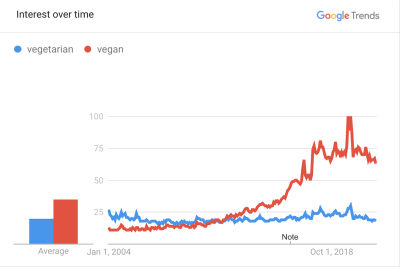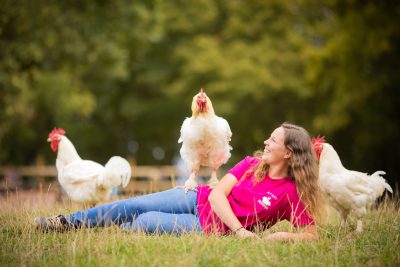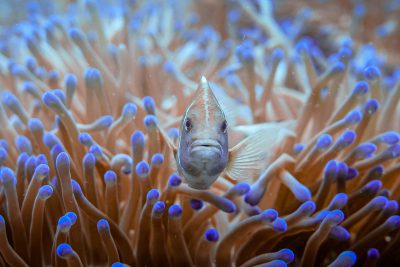And if you like being vegetarian, you will LOVE being vegan!
All over the world, interest in veganism is growing. Those who see the positive reasons for eating diets free from meat and fish are realising that those same benefits are amplified when cutting out dairy and eggs, too. So, what are the benefits of switching to veganism, and how can vegetarians make the transition smoothly?
Animals
For many people, being vegetarian is a boycott of the factory farm and slaughter industries that cause so much suffering to animals. The link between animals dying and meat is obvious, but cows farmed for their milk and hens farmed for their eggs are both intensively reared and slaughtered, too. It’s just as common, but much less visible.
Both milk and egg production rely on the exploitation of animals’ reproductive systems, which means unwanted babies are inevitably born. Cows, like all mammals, must be pregnant in order to produce milk, but it’s not the calf we want, just their milk. Some calves will be raised for veal and slaughtered when a few weeks or months old, but if money cannot be made from their tiny bodies, they are simply shot at birth.
Only female animals produce eggs, and so every male chick hatched into the egg industry is considered worthless. They cannot be profited from and so they are simply ground up alive, crushed or gassed to death on their very first day of life. This happens to millions of chicks every single year.
The killing of calves and chicks is not a rare occurrence; it is absolutely integral to the dairy and egg industries. As for the cow who produced the milk for her calf, or the hen who laid the eggs she wanted to hatch, their lives are only worth something while they keep producing large quantities of the desired vegetarian produce. When their productivity declines, as it does when they are still quite young, they are sent to slaughter, too and another unfortunate animal is caged or penned in their place.
Environment
As the impact of our food choices on the world around us comes into ever clearer focus, we see that animal agriculture is behind so much environmental damage, including deforestation, wildlife loss, climate change and water pollution.
In terms of climate impact, dairy milk is three times more damaging than soy milk, while the meat derived from dairy cows is the third most damaging food analysed, only behind beef from beef cows and lamb or mutton. And if we look at eggs, they are more damaging per kilogram than every plant-based food analysed apart from chocolate.
The dairy and egg industries are renowned polluters. Cows are large animals who produce a lot of manure. In fact, just one 2,000-cow dairy generates more than 240,000 pounds of manure daily or nearly 90 million pounds a year. That slurry is dumped or leaked into the environment where it pollutes waterways, leading to oxygen-depleted waters and the deaths of aquatic animals. This happens in rivers, lakes and the ocean.
Dairy cows and egg-laying hens are commonly factory farmed. Obviously, this is bad for them but it also places a significant burden on the planet, as they are fed highly processed feed, often containing soy grown on deforested lands, including the Amazon. By far the biggest consumers of soy are farmed animals, including dairy cows and hens.
Read more on the environmental benefits of becoming vegan.
Health
Most of the adult population of the world cannot digest the sugar in milk. Almost 100 percent of Asian, African and Native American people are lactose intolerant while in black communities, the rate is over 70 percent. Many people suffer bloating, stomach cramps and diarrhea but have no idea it is milk that is causing those unpleasant symptoms.
Aside from digestive issues, dairy is also associated with poor skin, including acne, and – more worryingly – heart disease and cancer. One study funded by the National Cancer Institute, the National Institutes of Health, and the World Cancer Research Fund, found that women who consumed one quarter to one third cup of cows’ milk per day had a 30 percent increased risk for breast cancer. One cup per day increased the risk by 50 percent, while 2-3 cups were associated with an 80 percent increased chance of breast cancer.
Other studies have also found a breast cancer link, while regular consumption of dairy is also linked to prostate cancer.
Seven Steps for Vegetarians Transitioning
So, you’re thinking about moving away from eggs and milk – that’s great news! You can empty out your refrigerator straight away if that’s what works best for you, but if you want to make small switches that will get you to your goal with minimum disruption, here is our seven-step guide to help you on your way.
- Start with milk! This is the easiest product to switch out, as there are so many delicious plant-based milks available – from soy, almond and cashew to oat, rice and coconut. You may prefer one in coffee and another on your oatmeal, so test them out and see what works best for you.
- Once you’ve found your milk, look out for the dairy-free creams, ice creams and yogurts. Many taste just like the dairy versions but come without the downsides.
- Next up, mayo! If this is your weak spot, don’t worry. Vegan mayo is so good that many people choose it over the non-vegan kind, irrespective of their dietary choices. Give it a go!
- Love baking and can’t imagine life without cake? Veganism is not about deprivation. You can make cakes, pancakes, cookies, and even meringues using plant-based ingredients. Check out our tips here and search online for vegan baking recipes – you’ll find there are thousands of them. This could be the most fun step of all!
- Step five: Remind yourself why this is important to you. Sometimes, we focus on the foods so much we forget why we eat the way we do. Read up on the damage caused by the egg and dairy industries to chickens and cows, planet and health, and you’ll be more motivated than ever to stick with a fully animal-free diet.
- Now we’re down to the final products that people often think they will miss, starting with chocolate. There are so many excellent vegan chocolates on the market now, and not just those rich, dark varieties. There are ‘milk’ chocolates that are creamy and sweet but contain no milk at all, and even white chocolate. Check them out, and we’re sure you’ll love them.
- The last step is to tackle that tricky little devil, cheese. Again, there are many vegan cheeses available and they have improved immeasurably in the past few years. Some are based on coconut, others on cashews or soy. Some melt, some are great in sandwiches, and some are so good you will want to eat them straight from the pack. People who struggle to switch to vegan cheese often prefer to quit dairy cheese altogether for four weeks before trying the vegan ones. That way, they are not comparing like with like (and let’s be honest, vegan cheeses are not EXACTLY like dairy cheese). Whatever works for you, works. But remember this: it is better to complete steps 1 through 6 than quit because you can’t do them all. So if cheese (or chocolate, or something else) is the one thing you can’t imagine life without, be vegan apart from that one thing. You’ll be doing a huge amount of good, and maybe in time that final piece will click, too.



